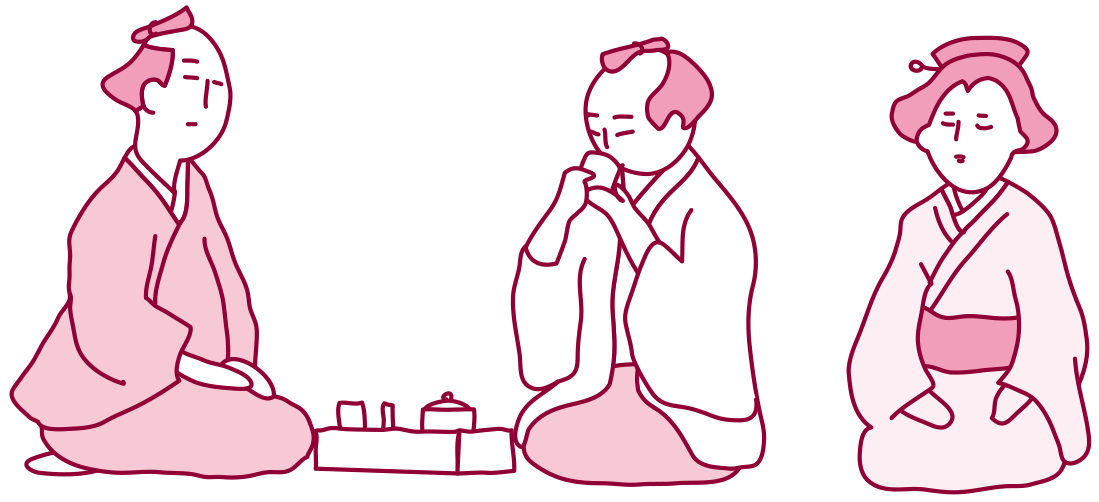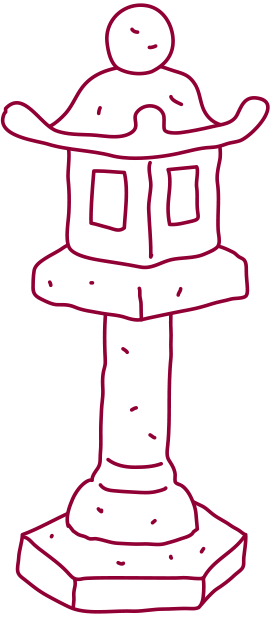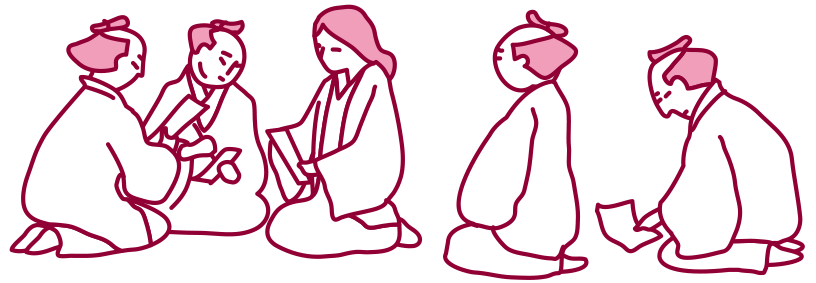The Tea Ceremony
Matsusaka and the Way of Tea

Gamo Ujisato, the founder of Matsusaka, deeply loved the Way of Tea, and was one of renowned tea master Sen no Rikyu's seven main disciples. Later, the merchants living in the castle town would also greatly enjoy the tea ceremony, and held tea gatherings nearly every day. It is said that the tea ceremony was part of their daily lives; when business prospered they would splurge on tea utensils, if business was tight they would sell them.
Gamo Ujisato and Sen no Rikyu

When tea master Sen no Rikyu was forced to commit seppuku for rousing the anger of Toyotomi Hideyoshi, Ujisato was the one to look after Rikyu's son Shoan. Ujisato and Tokugawa Ieyasu were able to get a pardon for Shoan, and his descendants went on to establish the Omotesenke, Urasenke, and Mushakouji Senke schools of tea.
Food Culture
Well-Balanced Dietary Habits
Located near the sea and mountains, and with a bustling highway passing through it, Matsusaka had easy access to all kinds of fresh ingredients. Merchant families, however, sought to live frugal and simple lives, and normally ate modestly. Even the heads of household only dined lavishly on special occasions such as New Year and festivals in honor of local mountain deities. Additionally, people in Matsusaka did not start eating beef until the Meiji period (1868-1912).

Meals on Auspicious Days
An Extravagant Menu for Special Days
While they typically lived very modestly, Matsusaka merchants enjoyed luxurious meals on auspicious days. Hasegawa family documents from New Years in the Taisho period (1912-1926) indicate the family ate extravagantly, including an abundance of soups, pickles, herring roe, Japanese sake, and other special foods. While lunches included tea poured over rice, sake was served at night, and even employees were treated to sake.
Everyday Meals
Simple Ingredients and Simple Eating
It is thought that during the Edo period, it was common for merchants to eat simply during their day to day. Each day's menu was mostly the same, and main dishes were usually a seasonal vegetable stewed or boiled, or a pickled food. In other words, extravagant meals on holidays were for enjoyment, while everyday meals were for health. Getting proper nutrition by striking this balance may have been a part of Japanese wisdom.
Mochi (Japanese Rice
Cakes)
The Sweets Highly Popular
Among Pilgrims
It is said that travelers on their way to the Ise Grand Shrine liked to eat sweet mochi on the road. Mochi was popular because you could eat it immediately, and it kept you full. As a result, there were a lot of mochi shops on the Ise-kaido Road, and people sometimes called it the "Mochi-kaido Road." Even today, there are many mochi shops along the road to Ise.
Let’s Walk Matsusaka
The Detached House and Garden of
the Hasegawa Residence
With its seemingly simple appearance and lack of extravagant decoration, the detached house of the Hasegawa Residence provides a glimpse of the values of Matsusaka merchants: quality amid simplicity.

Luxury Dining in Matsusaka
The most common way to eat Matsusaka beef is as sukiyaki. Matsusaka-style sukiyaki is made by first sprinkling sugar on the beef as it cooks, followed by adding soy sauce. In Kanto, the style is to use a pre-mixed sukiyaki sauce.

